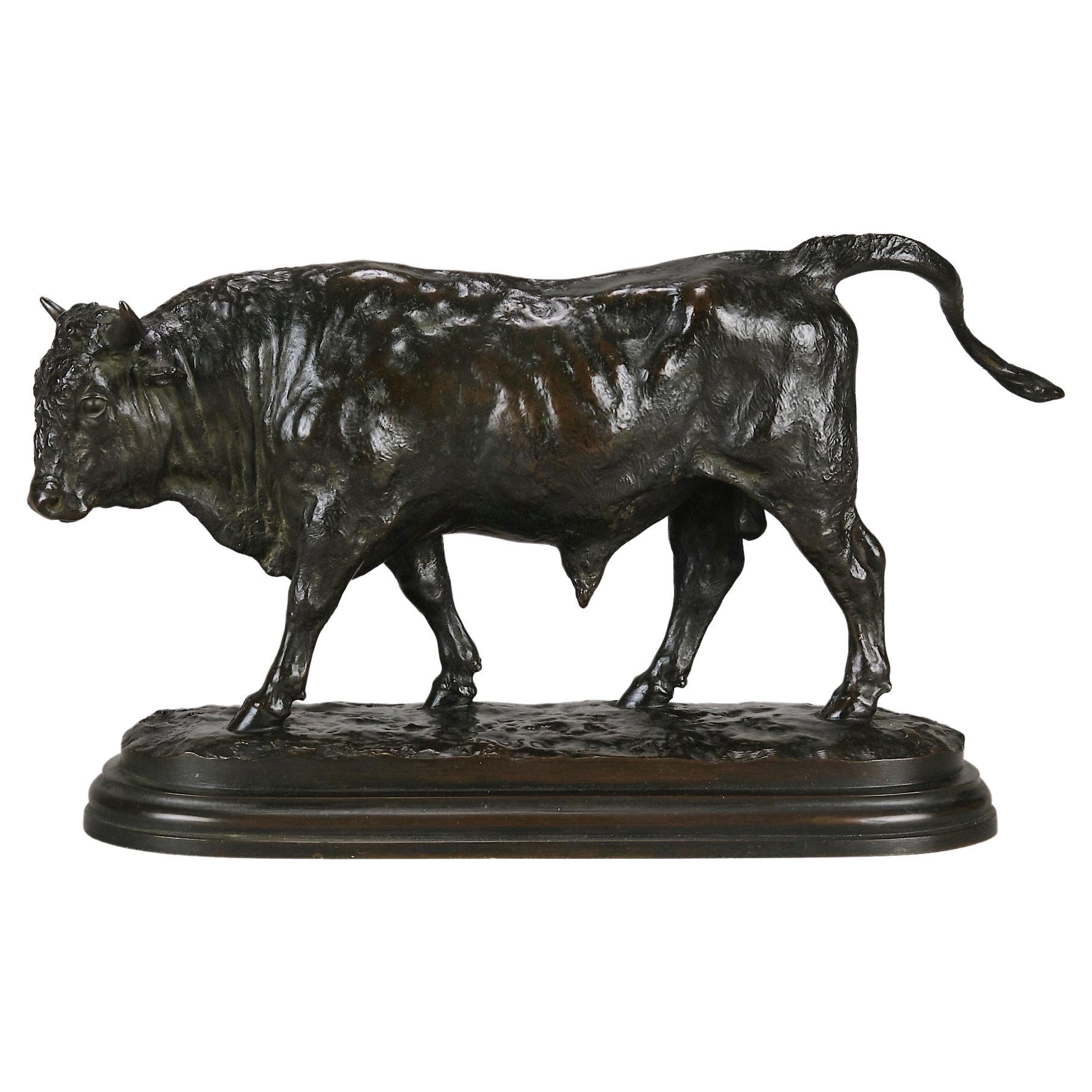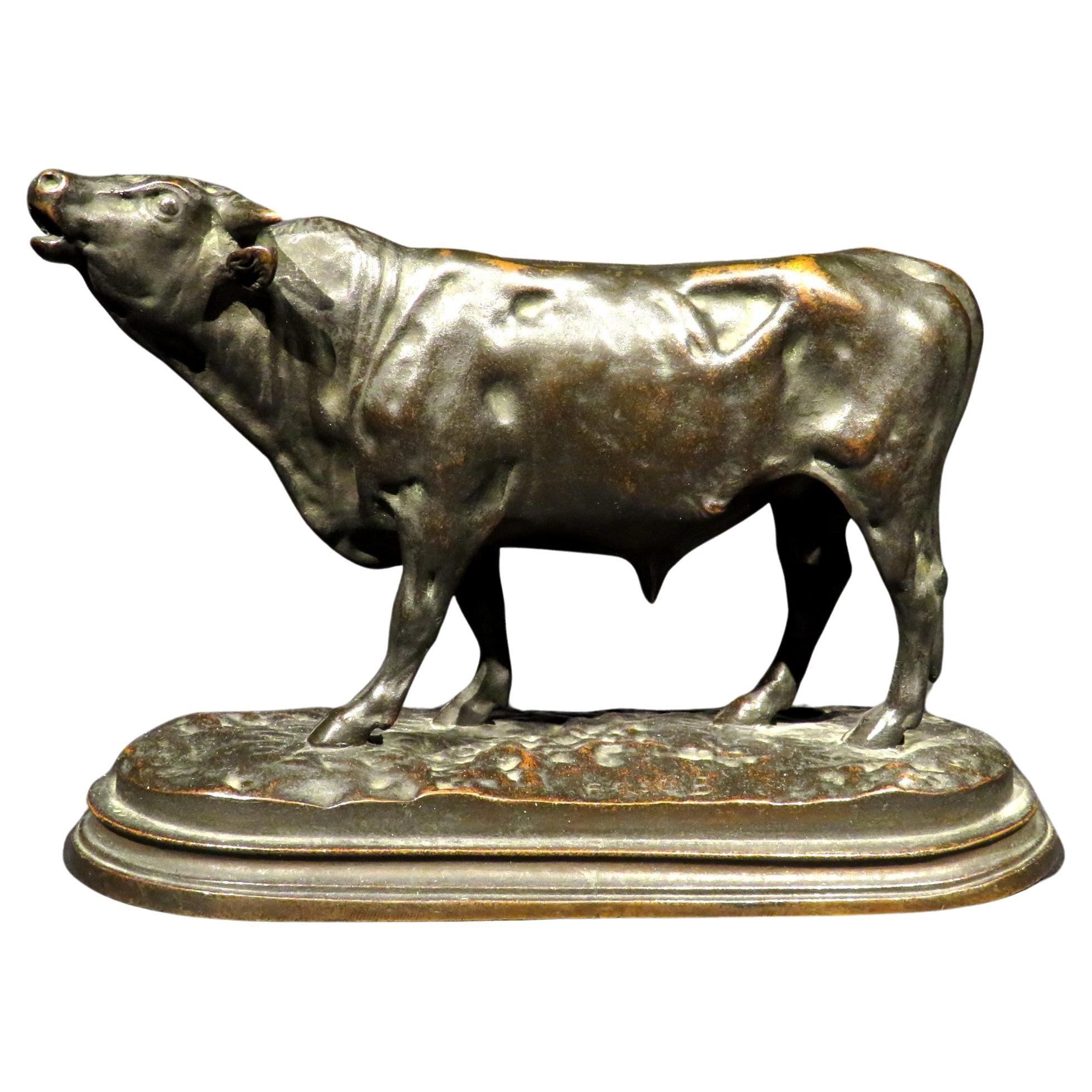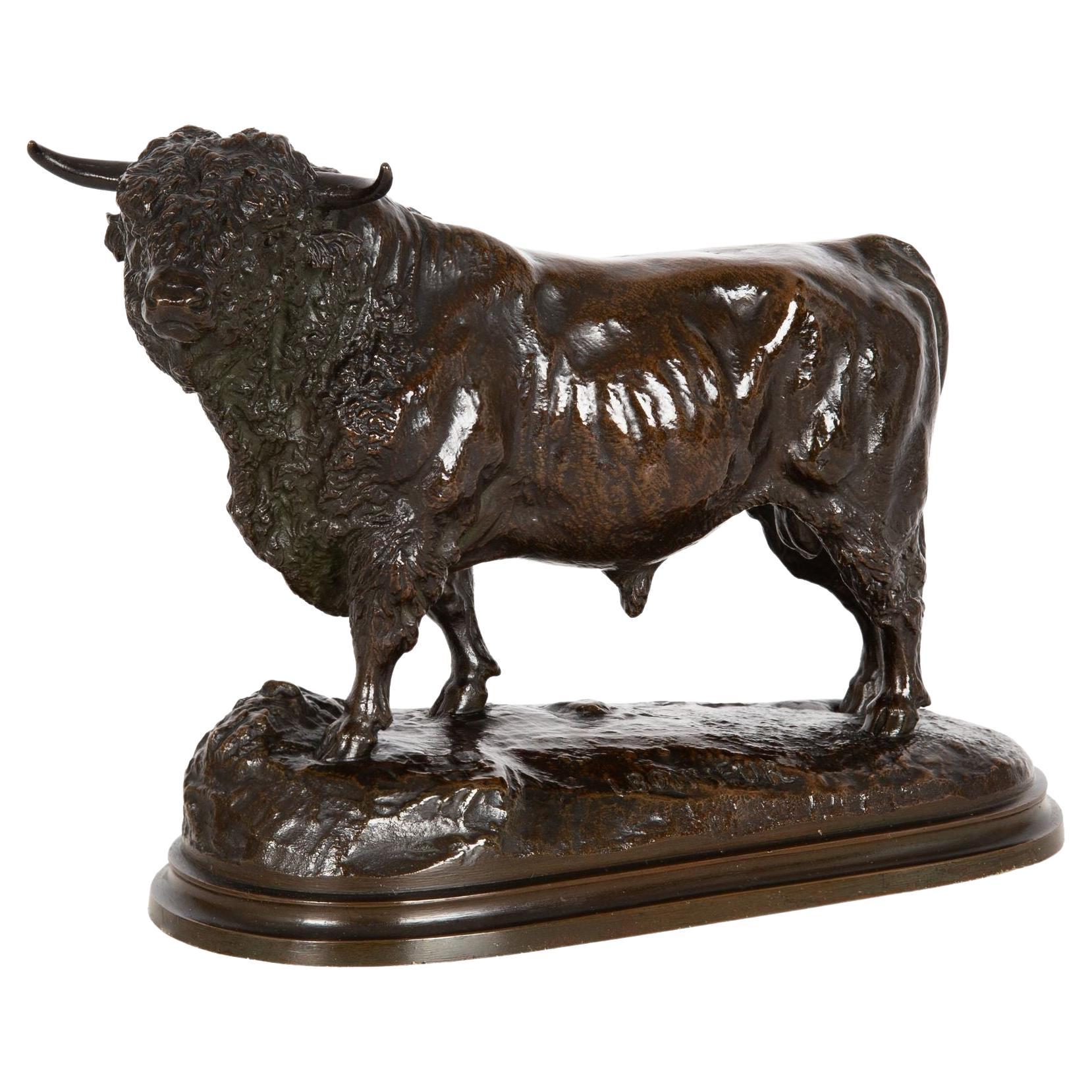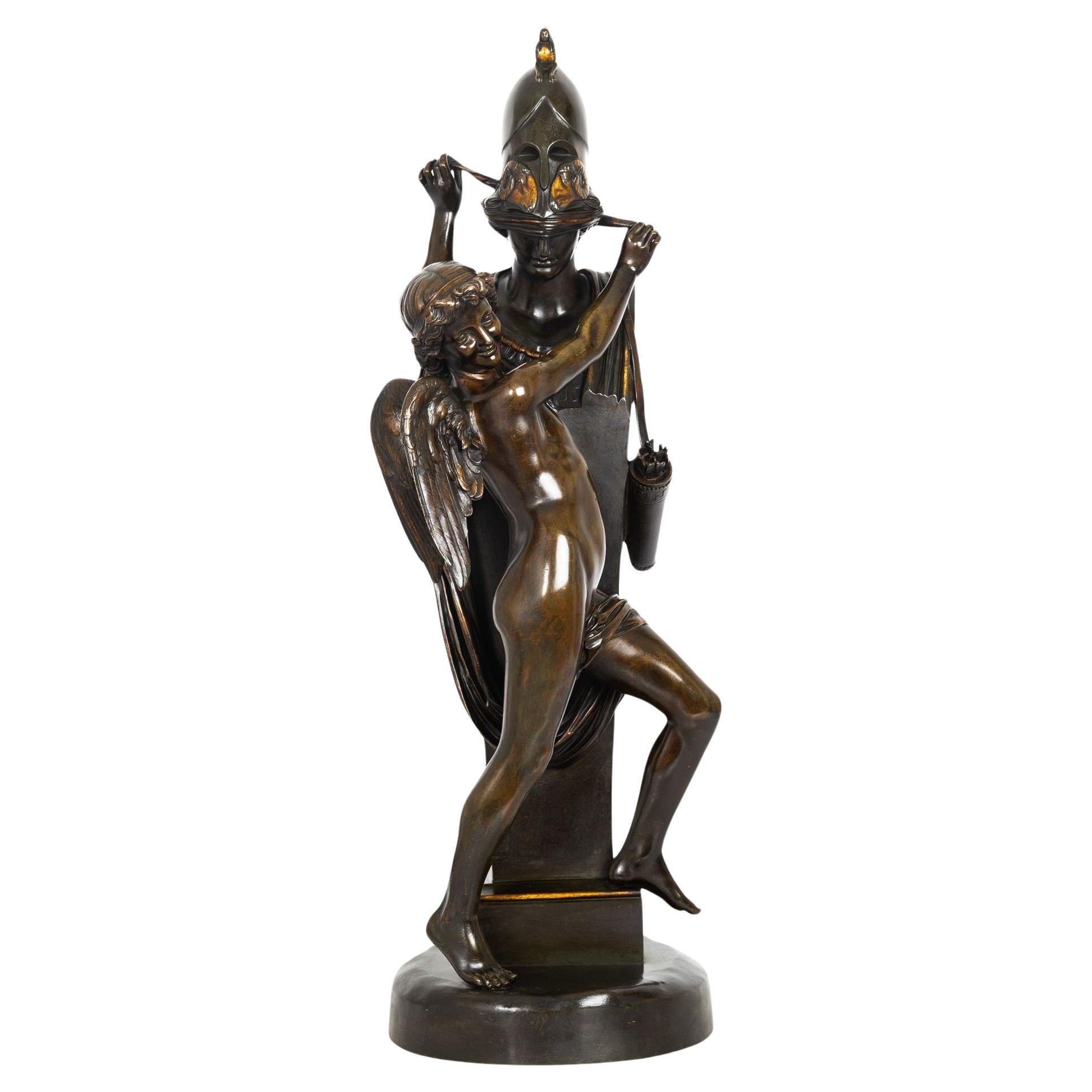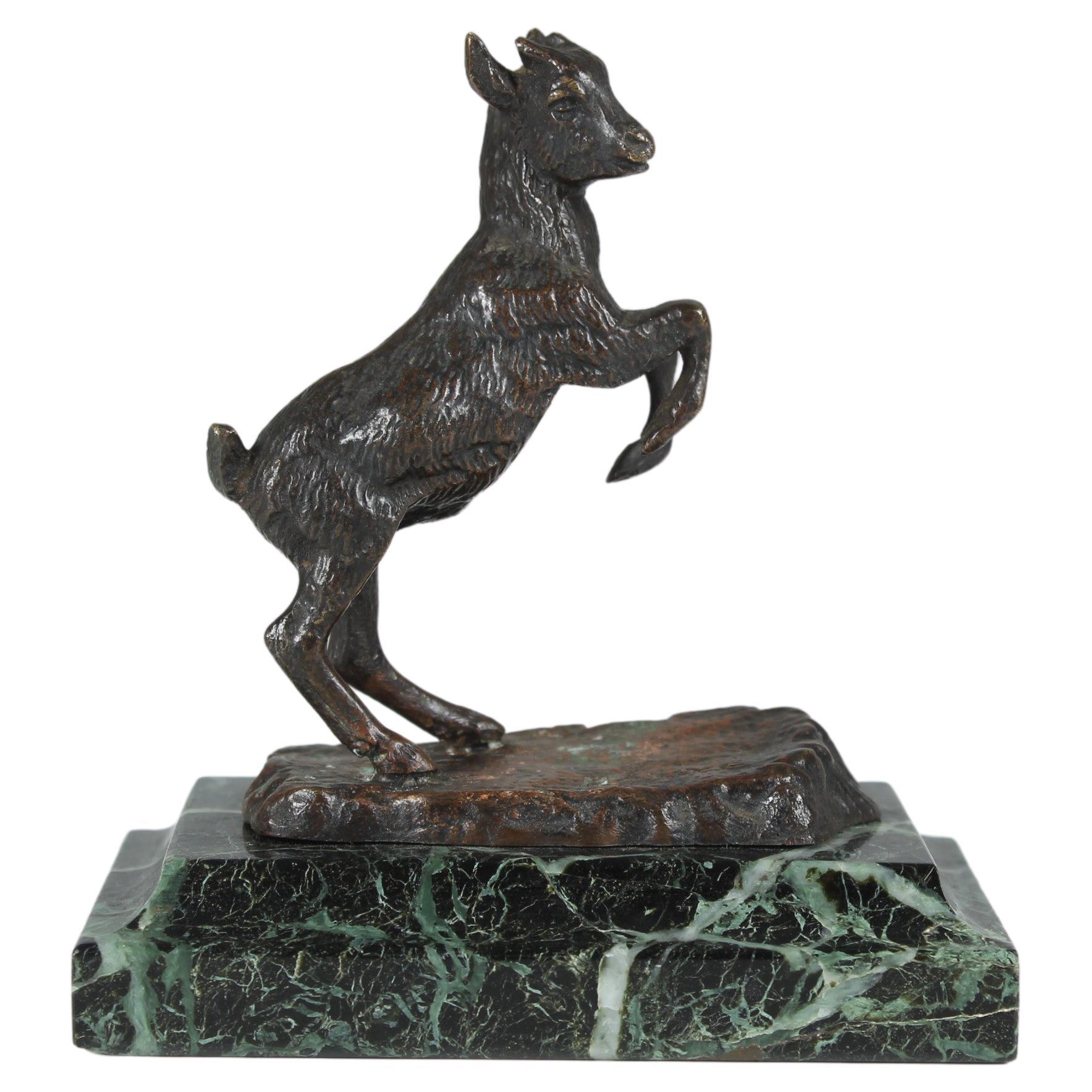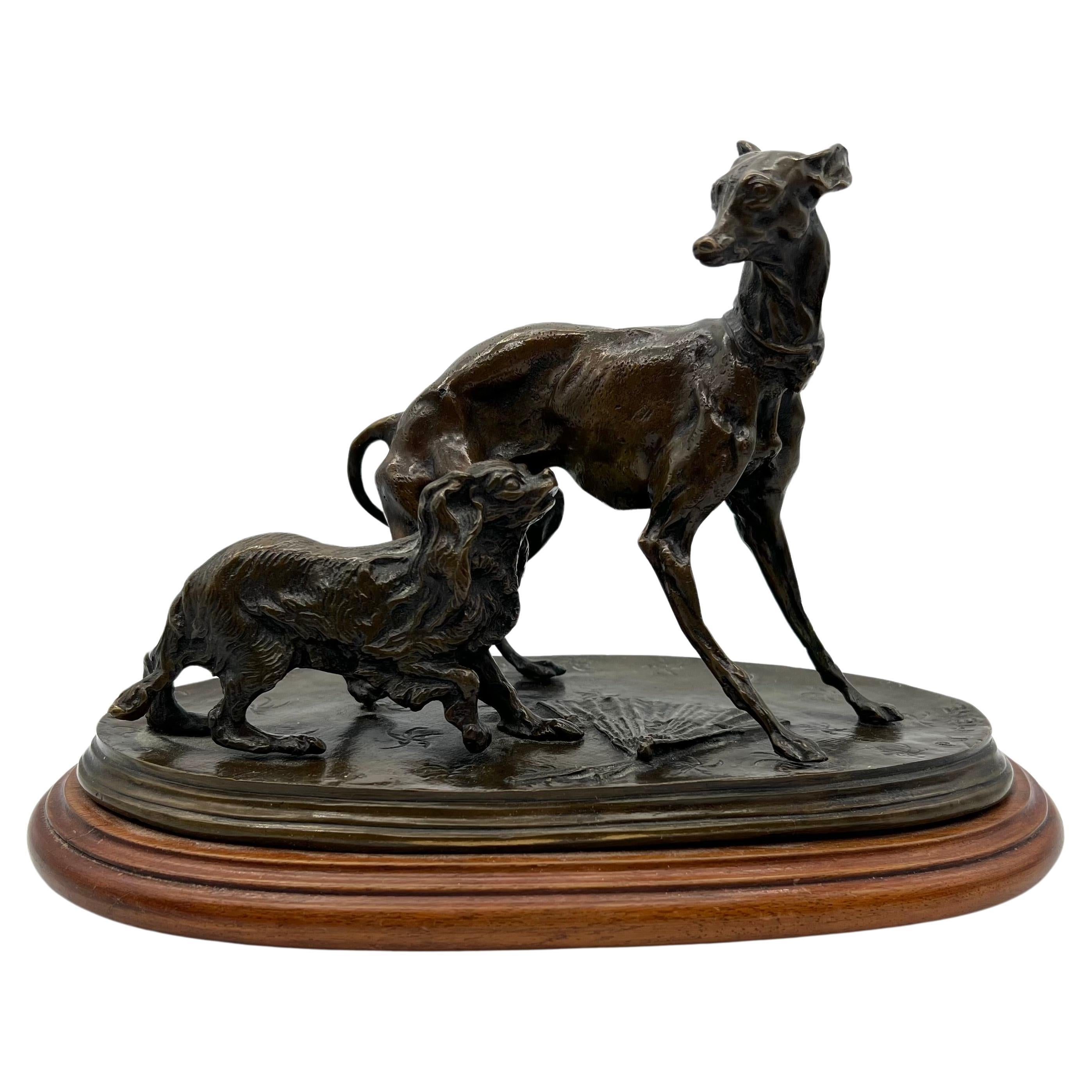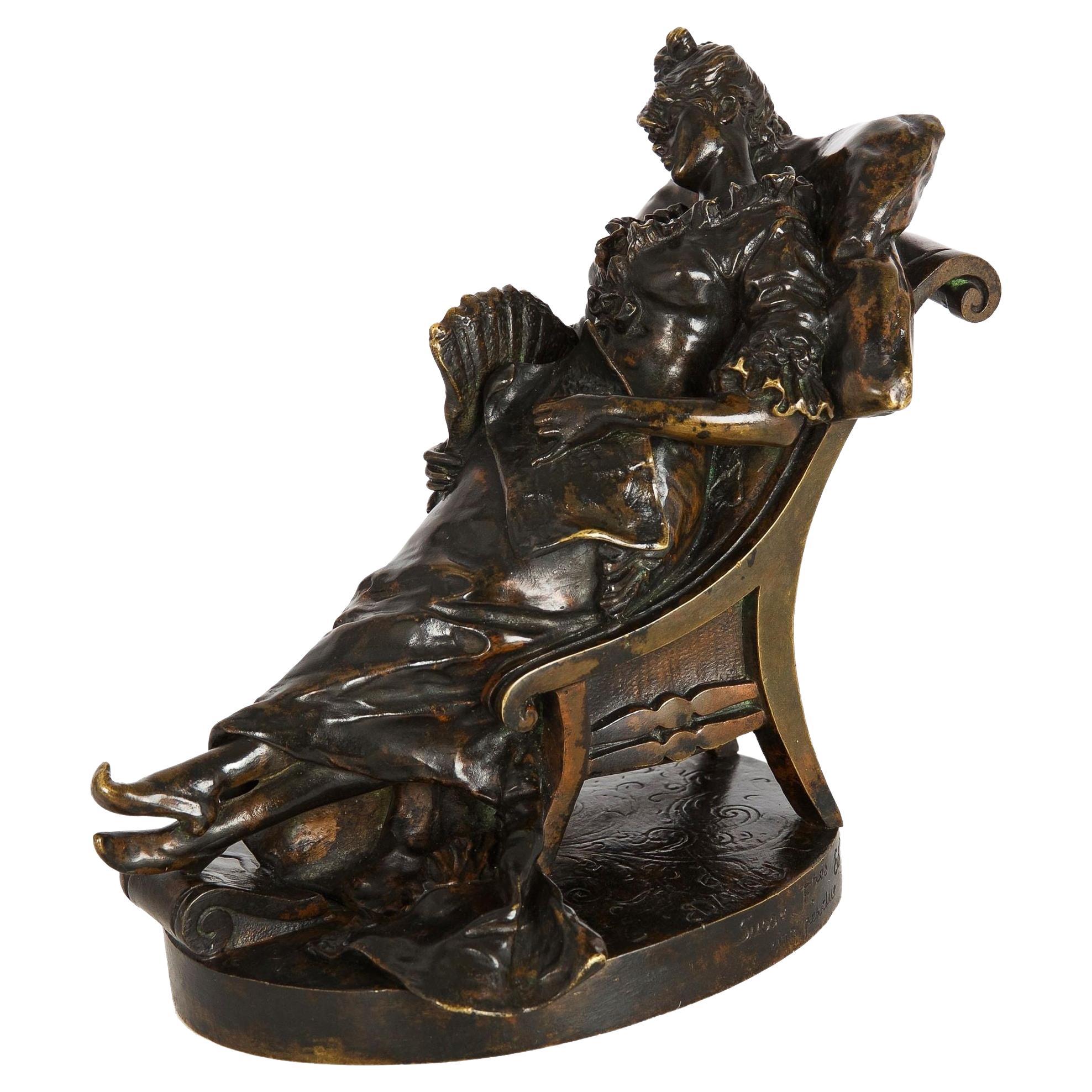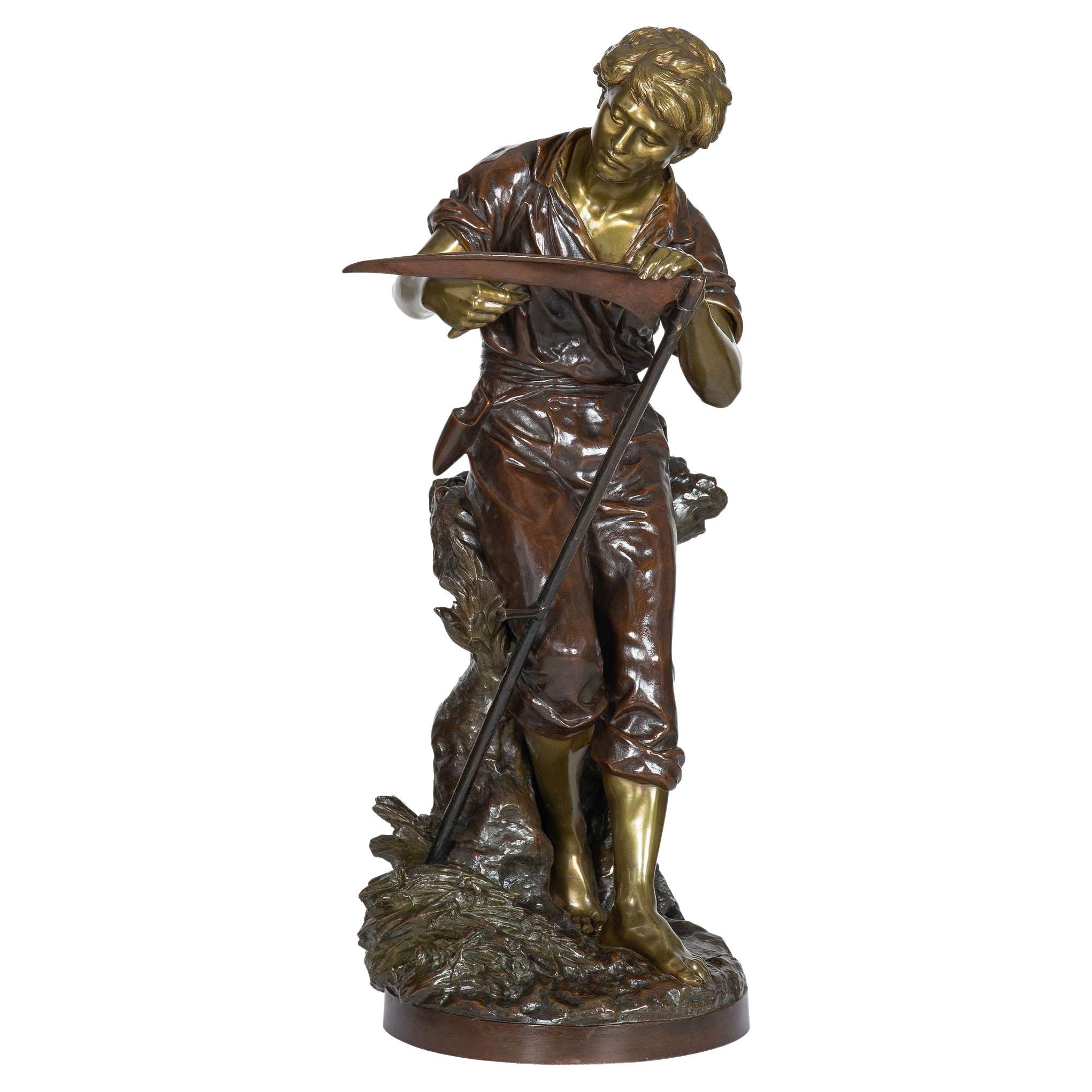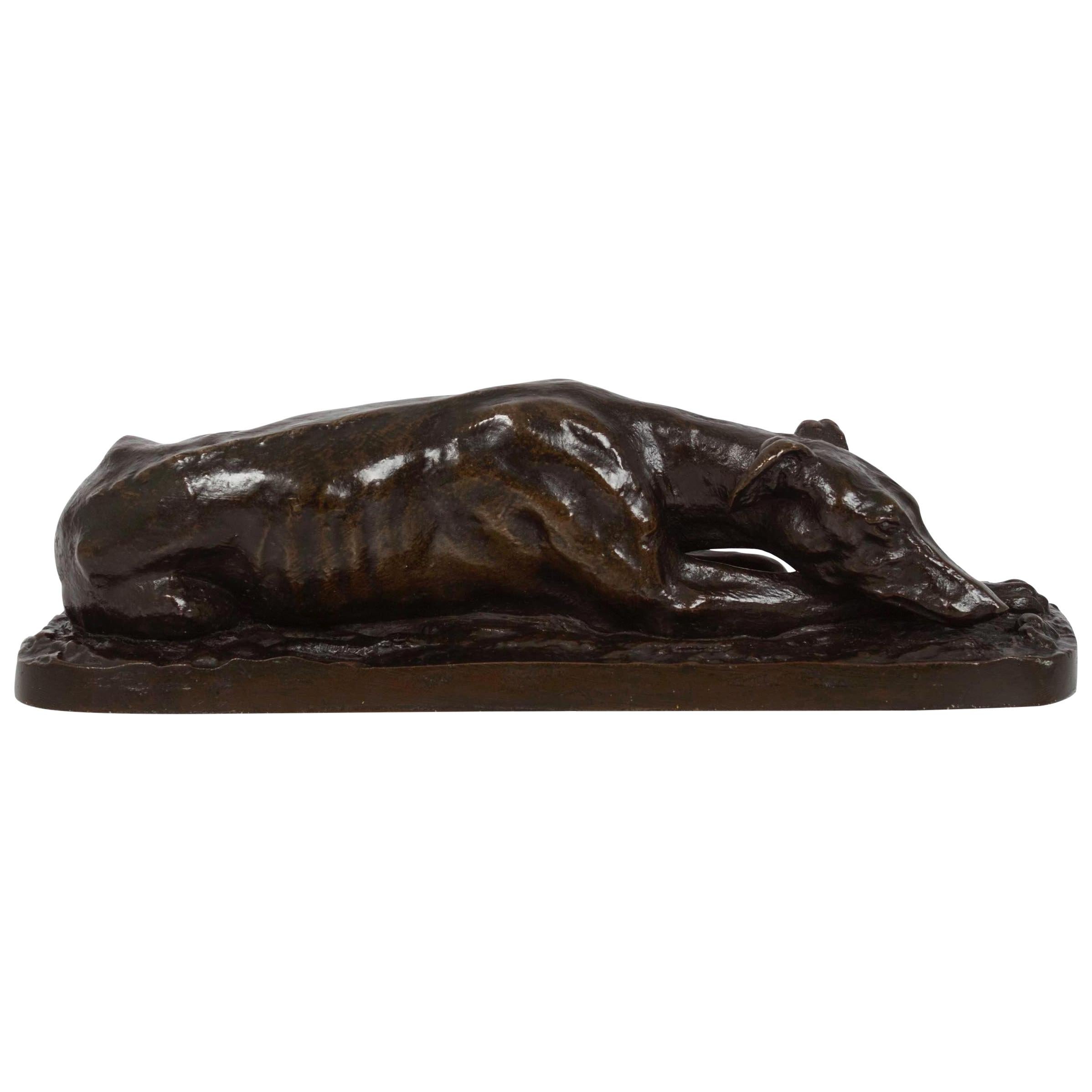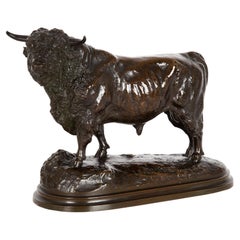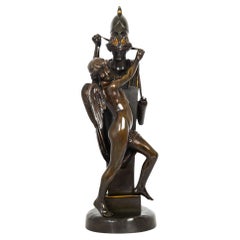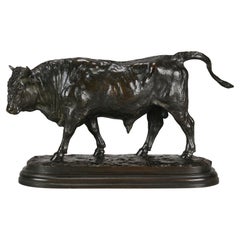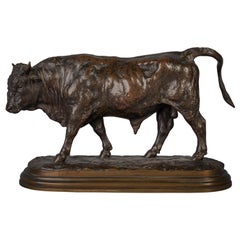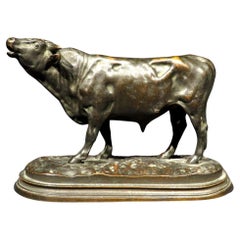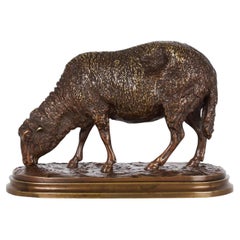
French Antique Bronze Sculpture "Mouton Broutant" by Rosa Bonheur circa 1870
View Similar Items
Want more images or videos?
Request additional images or videos from the seller
1 of 15
French Antique Bronze Sculpture "Mouton Broutant" by Rosa Bonheur circa 1870
About the Item
- Creator:Rosa Bonheur (Sculptor)
- Dimensions:Height: 5.75 in (14.61 cm)Width: 8.44 in (21.44 cm)Depth: 3.94 in (10.01 cm)
- Style:Romantic (Of the Period)
- Materials and Techniques:
- Place of Origin:
- Period:
- Date of Manufacture:1880
- Condition:See condition notes in description text.
- Seller Location:Shippensburg, PA
- Reference Number:Seller: 202TPC12U1stDibs: LU1059028006532
About the Seller
4.9
Recognized Seller
These prestigious sellers are industry leaders and represent the highest echelon for item quality and design.
Platinum Seller
These expertly vetted sellers are 1stDibs' most experienced sellers and are rated highest by our customers.
Established in 2009
1stDibs seller since 2014
472 sales on 1stDibs
More From This SellerView All
- French, Antique Bronze Sculpture of Aberdeen Angus Bull by Isidore BonheurBy Isidore Jules BonheurLocated in Shippensburg, PAISIDORE JULES BONHEUR French, 1827-1901 Taureau Aberdeen-Angus" (Standing Aberdeen-Angus Bull) Patinated sand-cast bronze Signed to base "I. BONHEUR" Item # 211HDB17Z An exquisite and very rare casting of an Aberdeen-Angus bull, an unusual and distinctive breed of cattle from Scotland, this sculpture by Isidore Jules Bonheur is almost without a doubt cast by the foundry of his brother-in-law Hippolyte Peyrol and a rather early model as well in light of the distinctive construction method. In her text on the selection of 46 animal bronzes in the collection of the Georgia Museum of Art, Eleanor Luciano notes regarding this model that "Bonheur is never recorded to have been to Scotland, where he would have seen this unusual breed. Rosa Bonheur painted in Scotland, and its seems likely that Isidore would have drawn the idea for this bull either from one of her sketches or from an agricultural show in France. The animal's rich mane and strong modeling make this one of the most successful." Notable is the very fine surface patination which exhibits a glassy finish with a complex range of colors presenting in the body of the bull, overall being medium brown but augmented with an underlying reddish hue against auburn highlights. The base is signed "I. BONHEUR" in the typical manner. Museum Collections: * National Gallery of Art, Washington DC, acc. no. 2006.128.3 * Georgia Museum of Art, University of Georgia...Category
Antique 19th Century French Romantic Animal Sculptures
MaterialsBronze
- “Love Conquers” French Bronze Sculpture by Felix Sanzel circa 1870Located in Shippensburg, PAFELIX SANZEL French, 1829-1883 "L'Amour vainqueur" [Love Conquers] (1865) Patinated and burnished bronze signed in cast "Fx Sanzel" a lifetime cast circa 1870 Item # 306PRK21E ...Category
Antique 19th Century French Romantic Figurative Sculptures
MaterialsBronze
- Pair of French Bronze Antique Putto Sculpture Candelabra Lamps, circa 1870-1890Located in Shippensburg, PASUPERB PAIR OF DORÉ AND PATINATED BRONZE SEVEN-LIGHT CANDELABRA WITH PUTTO FIGURALS France, circa 1870-1890 Item # 007LTX30A An incredibly fine pair of ...Category
Antique 19th Century French Table Lamps
MaterialsBronze
- Rare 1870s French Bronze Sculpture "Sleeping Woman" by Aimé-Jules DalouBy Aimé-Jules DalouLocated in Shippensburg, PAAIMÉ-JULES DALOU French, 1838-1902 A Sleeping Woman Patinated lost-wax cast bronze signed "DALOU" to base, inscribed "Susse Fres Edrs PARIS" and "cire p...Category
Antique 19th Century French Romantic Figurative Sculptures
MaterialsBronze
- French Antique Bronze Sculpture of "Harvester" by Mathurin MoreauBy Mathurin MoreauLocated in Shippensburg, PA"HARVESTER" AFTER A MODEL BY MATHURIN MOREAU (FRENCH, 1822-1912) In a reddish-brown and golden patinated bronze; signed in base "Math. Moreau" Item # 012SKP14W A fine model of a rural young farmer resting against a rocky outcrop to sharpen his scythe, the base of which has been set in the hay collected in a pile beside the rock; the naturalistic base is signed along the back in his typical nearly cursive script "Math. Moreau". It is a complex model and a fine accomplishment for the foundry, the joints seamlessly flowing into one another without any obvious connections. The surface is chiseled with great care, resulting in fine detailing of the toes and fingers to include the wrinkles at each joint and texturing of the nails, crisp eyelids and flawless skin, gorgeous texturing of the garment...Category
Antique Early 1900s French Romantic Figurative Sculptures
MaterialsBronze
- French Antique Bronze Sculpture of Pointer Dog by Pierre-Jules Mêne circa 1880By Pierre Jules MêneLocated in Shippensburg, PAPIERRE-JULES MÊNEFrench, 1810-1879"Chien braque à la feuille"Medium-brown patinated sand-cast bronze raised edge signature cast into base "P.J. MÊNE" pr...Category
Antique 19th Century French Romantic Animal Sculptures
MaterialsBronze
You May Also Like
- 19th Century Animalier French Bronze Entitled "Taureau Debout" by Rosa BonheurBy Rosa BonheurLocated in London, GB"Taureau Debout" by Rosa Bonheur. An excellent late 19th Century French animalier bronze study of a standing bull with fine hand chased surface that accentuates the muscle definition of the subject, signed Rosa B. ADDITIONAL INFORMATION Measures: Width: 32 cm Height: 18 cm Depth: 11cm Condition: Excellent Original Condition Circa: 1870 Materials: Bronze Book reference: Animals in Bronze by Christopher Payne Page no. 174 DESCRIPTION Bonheur, Rosa (1822-1899) The most popular artist of nineteenth-century France, Rosa Bonheur was also one of the first renowned painters of animals and the first woman awarded the Grand Cross by the French Legion of Honor. A professional artist with a successful career, Bonheur lived in two consecutive committed relationships with women. Born on March 16, 1822 in Bordeaux, Marie Rosalie Bonheur was the oldest of the four children of Raimond Oscar Bonheur (1796-1849) and Sophie Marquis. Bonheur's father was an art teacher who came from a poor family, while her mother, a musician, had descended from a middle-class family and had been her husband's art student. Bonheur's father, who taught drawing and landscape painting, was an ardent member of the utopian Saint Simeon society. The group held idealistic beliefs about the reform of work, property, marriage, and the role of women in society. Most importantly, for the artist's future, the Saint Simeons questioned traditional gender norms and firmly believed in the equality of women. While teaching artistic techniques to his oldest daughter, Raimond Bonheur also encouraged her independence and taught her to consider art as a career. In 1828 Raimond Bonheur joined the Saint Simeons at their retreat outside Paris. Sophie and the children joined him in Paris the following year. Four years later, however, Raimond abandoned his family to live in isolation with his fellow Saint Simeons. Sophie Bonheur died in 1833 at the age of thirty-six. Rosa was only eleven years old when her mother died, but she was aware of the heavy price her mother paid for married life with a man who was more dedicated to his own ideals than to meeting his family's needs. Rosa also saw that her mother's marriage led to poverty and her death from exhaustion. After her mother's death, Bonheur was taken in by the Micas family who resided nearby. Mme Micas and Bonheur's mother had been friends. When Mme Bonheur died, the Micas family paid Raimond Bonheur's debts and cared for Rosa. Their daughther, Nathalie, who would later become an amateur inventor and unschooled veterinarian, and Rosa became enamored with each other. When Rosa Bonheur began her career as a professional artist, she had already been trained by her father who had allowed her to study in all male classes. Rosa also learned by sketching masterworks at the Louvre from the age of fourteen, and later, by studying with Léon Cogniet. From the very beginning, Bonheur's favorite subject was animals. She learned their anatomy completely by dissecting them in local slaughterhouses. She also visited the horse market two times a week. Study of animals by direct observation led to the formation of the realist style in which Bonheur worked. It was for such work that Bonheur obtained written permission from the French government to wear men's slacks. Her working attire also consisted of a loose smock and heavy boots that protected her feet from the dangerous environment in which she painted. The style of dress that the artist adopted for work and home may well have been influenced by her father's attire, which was based on St. Simeonian clothing experiments. Bonheur also cropped her hair, perhaps to facilitate her work. She did, however, always wear dresses for social occasions because she knew that appropriate dress would further her career. Bonheur earned a successful living as a painter of animals. She exhibited at the annual Paris Salon regularly from the age of nineteen in 1841 through 1853, when she was thirty-one. She won the salon's gold medal at the age of twenty-six in 1848 and was commissioned by the French government to paint Plowing on the Nivernais in 1849. In the same year Bonheur and her sister Juliette became directors of l'École gratuite de dessin pour les jeunes filles, a post their father had once held. Bonheur completed her most renowned work, The Horse Fair, in 1855. The successful representation of percherons (a breed native to Normandy) was purchased by Ernest Gambart, a London art dealer whose gallery specialized in work by French artists. He exhibited The Horse Fair in London where Bonheur visited with Nathalie. Queen Victoria requested a private viewing of the painting at Windsor Castle. It would later be purchased in 1887 by Cornelius Vanderbilt and donated to the new Metropolitan Museum of Art in New York City. Bonheur's trip to England allowed her to meet Charles Eastlake, then President of the Royal Academy, John Ruskin, the English writer and critic, and Edwin Landseer, the British animalier. She also toured the English and Scottish countrysides and executed some paintings based on her observations of new breeds of animals found there. Gambart made engravings of Bonheur's work, including The Horse Fair, and sold them in England, Europe, and the United States. Bonheur became one of the most renowned painters of the time. Little girls, such as Anna Klumpke in the United States, even had dolls in her likeness, much as American girls played with Shirley Temple dolls...Category
Antique 19th Century French Art Nouveau Animal Sculptures
MaterialsBronze
- French Bronze Figure of a Bull, by Rosa BonheurLocated in New York, NYInscribed "Rosa B" and stamped with the "Peyrol" foundry on the base.Category
Antique 1860s Animal Sculptures
MaterialsBronze
- A Very Good Patinated Animalier Bronze of a Bull, after Rosa BonheurBy Rosa BonheurLocated in Ottawa, OntarioAlthough there is seemingly no apparent foundry mark, this finely cast & patinated animalier bronze known as ‘Bull’ or ‘Taureau Beuglant’ is exemplary in demonstrating exceptional a...Category
Early 20th Century French Beaux Arts Animal Sculptures
MaterialsBronze
- Antique Bronze Sculpture by Antoine-Louis Barye, circa 1870By Antoine-Louis BaryeLocated in Greven, DEAntique bronze sculpture by the french sculptor and artist Antoine-Louis Barye. Signed at the plinth.Category
Antique 1870s French Animal Sculptures
MaterialsMarble, Bronze
- French Antique Bronze Sculpture of hunting Dogs by Pierre-Jules Mêne circa 1870By Pierre Jules MêneLocated in LA FERTÉ-SOUS-JOUARRE, FRSuperb bronze animal group with brown patina representing two dogs, a greyhound and a King - Charles , by Pierre - Jules Mêne . Signature of the sculptor "P.J.MÊNE" on the naturalist...Category
Antique 19th Century French Arts and Crafts Animal Sculptures
MaterialsBronze
- “Standing Setter” French Animaliers Bronze by Jules Moigniez, circa 1870Located in London, GBVery fine mid-19th century French Animalier bronze study of a standing Setter with excellent hand chased surface detail and rich brown patination. Raised on a stepped naturalistic base, signed J Moigniez. Additional information: Height: 19 cm Width: 34 cm Condition: excellent original condition Circa: 1870 Materials: bronze Book reference: Les Animaliers by Jane Horswell Page no. 237 About Jules Moigniez (French, 1835 ~ 1894) Moigniez was a French animalier sculptor of the 19th century. He worked primarily in bronze and frequently exhibited his sculptures at the Paris salon. He was best known for his bronzes depicting birds, although his skill and versatility enabled him to produce quality horse sculptures (primarily racehorses), dog sculptures and hunting scenes. His bird sculptures were among the finest ever created in his time. Moigniez was born at Senlis, Oise, France in 1835, the son of a metal gilder. Moigniez’s father bought a foundry to cast his sculptures, which was of great benefit to Moigniez as he didn’t have the added foundry costs that most of his contemporaries had to pay. Moigniez studied sculpture under the tutelage of Paul Comoléra (a student of François Rude) in Paris. It is quite likely that Moigniez’s attraction to bird sculpture was a direct result of his education under Comoléra, who was himself a bird specialist. Over the course of his 40-year sculpting career Moigniez exhibited thirty works at the Salon between 1855–92. His first submission in a major art exhibition was his plaster, Pointer Stopping at a Pheasant, at the Exposition Universelle of 1855.[1][2] Moigniez was known for the fine detail and chiseling of his sculptures. His bronzes—usually cast using the lost wax method—were always immaculately chased and patinated, and were especially popular in England and Scotland.[2] More than half of his output during his lifetime was sold in the United Kingdom. By the end of the 19th century, his sculpture had become popular in the United States as well. In contrast with other animaliers of the period such are P.J. Mêne and Antoine-Louis Barye, Moigniez’s bird sculptures often incorporated highly detailed bases complete with bushes, extensive foliage and undergrowth. His castings were generally of excellent quality with a variety of patinas, the gilded and silvered patinas being the most desirable and sought after by collectors. His bronzes could be reproached for an excess of detail, a result of overly-finicky, over-worked chiseling. Moigniez received redemption, however, by portraying in his sculpture a certain “elegance of attitudes”. His Chien braque...Category
Antique 19th Century Animal Sculptures
MaterialsBronze
